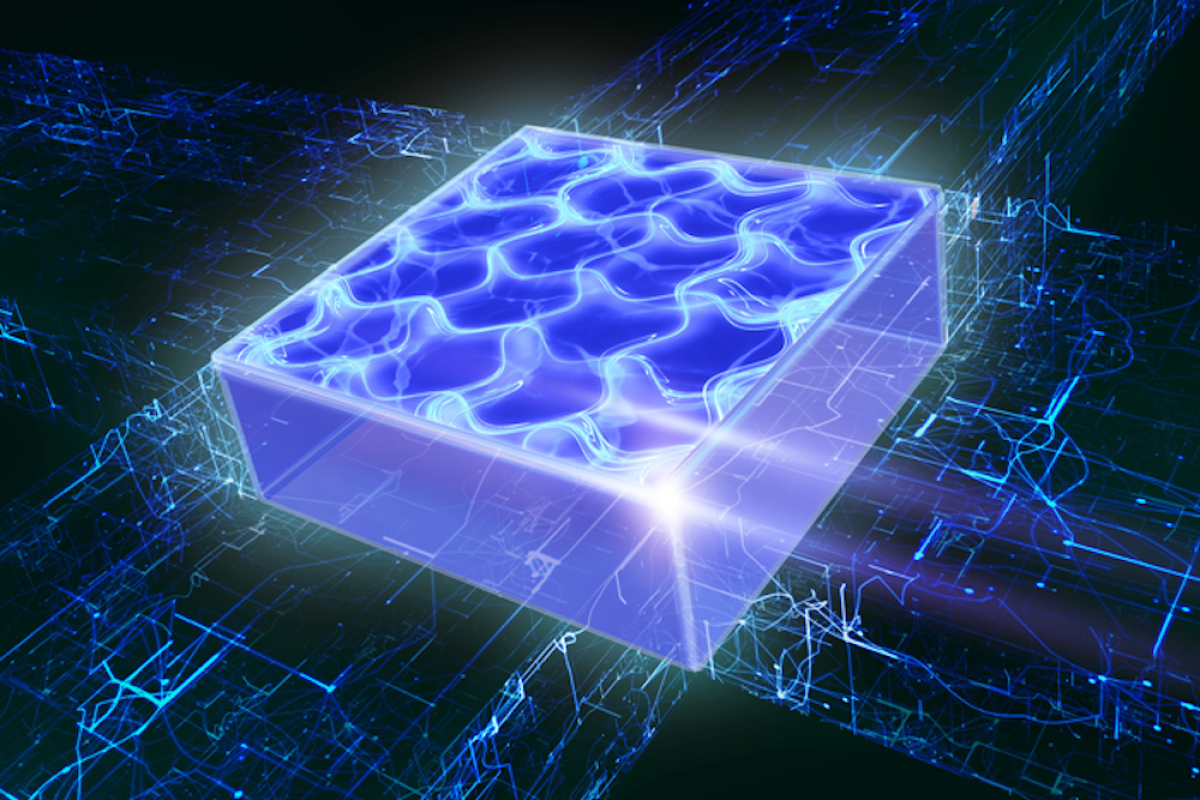
Strange supersolid state of matter created in new dimension
By Michael IrvingAugust 19, 2021
This is now really weird science. Read and digest. We will be innovating with this at the small scale level at least.
It is exciting to see this.
It took a long time to work at this level of strangness. Yet is was always super promising.
An artist's impression of a two-dimensional supersolid, where all the atoms line up in a crystalline structure like a solid but can flow freely at the same time
Besides the basic well-known states of matter – solid, liquid, gas and plasma – there are many exotic states being conjured up in the lab. One of these, known as a “supersolid,” was only confirmed a few years ago, and now researchers at the University of Innsbruck have created it in a new two-dimensional form.
A supersolid isn’t what it may sound like. Essentially, its atoms are arranged in a rigid crystalline structure, like a regular solid – but they can also flow with zero viscosity, like a superfluid. That sounds like a paradox, but scientists have thought it to be theoretically possible since the 1960s – and in 2017 it was finally experimentally confirmed.
Several teams of researchers have made supersolids using another state of matter called a Bose-Einstein condensate (BEC). These are made up of a low density gas cloud of atoms cooled down to almost absolute zero, and at that point, they exhibit strange quantum quirks that aren’t normally seen on such a large scale. All the atoms in the BEC exist at every point within the cloud at the same time, in a phenomenon called delocalization.
In previous experiments, supersolids were only made one-dimensional, so that the atoms could only flow in one direction. Now, the Innsbruck team has given them a whole new dimension to play in, like upgrading them from moving along a string to moving around a piece of paper. This BEC was made of dysprosium atoms, and magnetic interactions between the atoms caused them to arrange themselves into droplets, which themselves lined up in a grid.
“Normally, you would think that each atom would be found in a specific droplet, with no way to get between them,” says Matthew Norcia, an author of the study. “However, in the supersolid state, each particle is delocalized across all the droplets, existing simultaneously in each droplet. So basically, you have a system with a series of high-density regions (the droplets) that all share the same delocalized atoms.”
The team says that this breakthrough could allow physicists to study a whole new range of quantum weirdness that a one-dimensional supersolid cannot.
“For example, in a two-dimensional supersolid system, one can study how vortices form in the hole between several adjacent droplets,” says Norcia. “These vortices described in theory have not yet been demonstrated, but they represent an important consequence of superfluidity.”
No comments:
Post a Comment